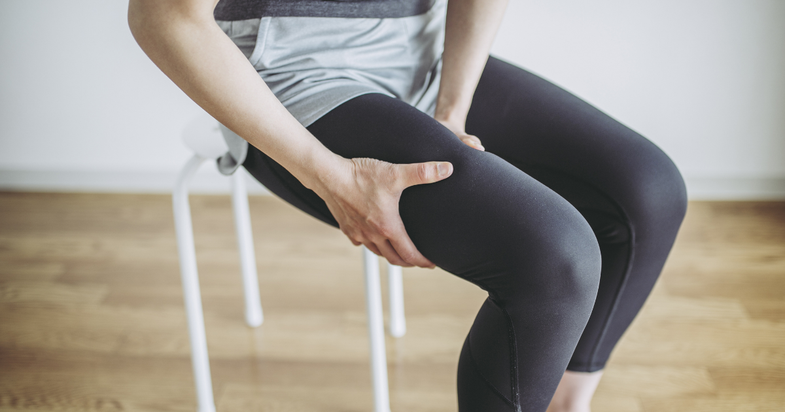
While leg pain during menstruation can be caused by a condition such as endometriosis, chemicals called prostaglandins that are responsible for regular period pain can also play a role, as can dehydration, nutritional deficiencies or hormone imbalances. .
Next, the underlying causes of leg pain during your period are examined in more detail, providing some areas to focus on in managing this symptom.
1. Excess Prostaglandins
Prostaglandins are most likely the main cause if you experience leg pain as a result of menstrual cramps, which can often occur around the time your periods are heaviest.
Prostaglandins are chemicals released from the lining of the uterus. These are responsible for breaking down the lining of the uterus, which then gives you what you know as your period.
These prostaglandins work by causing the uterus to contract and then contract, and this cycle of contraction and dilation can contribute to pain.
These prostaglandins are also quite inflammatory in nature and this can also cause inflammation around the uterine site; so from there, this pain can spread to other parts of the body.
For many women who experience diarrhea around the time they are also experiencing severe cramping in their abdomen, this may also be a result of prostaglandins traveling through and irritating the colon.
Remember, the uterus is very close to the colon, but these prostaglandins can also spread a little further, and women can experience cramping pain in the tops of their thighs and legs as well.
Interestingly, to help counteract this process, there has been research suggesting that certain anti-inflammatory supplements can help. Vitamin D and omega-3, in particular, are among these, as they are particularly anti-inflammatory and can specifically help with menstrual cramps.
2. Joint pain
It can also help to try and determine the type of pain you may be experiencing and where it is located in your body.
Women may also experience joint pain around the time of menstruation, possibly around the hips, again given that the hips are close to the uterus.
However, it is also important to consider any other underlying issues and how these may flare up as a result of hormonal changes during this time. So, if someone already suffers from osteoarthritis or rheumatoid arthritis, then you may notice symptoms associated with these conditions that flare up at this point in the month.
Estrogen is very good at helping keep our muscles and joints well lubricated. Therefore, as estrogen levels drop, this can often cause a flare-up of our symptoms; as our joints become dehydrated, they can easily become more sensitive to discomfort.
This scenario is also very common during menopause as estrogen levels fluctuate; but then our period is almost like a mini menopause so that makes sense! We are experiencing a decrease in estrogen levels, which can eventually exacerbate underlying conditions or underlying weaknesses.
However, this drop in estrogen that we get with periods is a natural occurrence and is part of a normal monthly cycle. So what can you do if you find yourself suffering as a result? First, it's important to prioritize hydration.
Hydration is absolutely important and can help to offset the drop in estrogen a bit and therefore retain some of the protective, moisturizing functions.
3. Muscle aches
If you experience monthly pain or discomfort, you may notice it in your joints or muscles. Interestingly, these prostaglandins are directly affecting your muscles in and around your uterus. But, as before, prostaglandins can easily spread to surrounding areas. Therefore, it could be muscle pain that you may be feeling in your thighs.
In this situation, obviously, hydration is very important, but priority should also be given to the nutrient magnesium.





